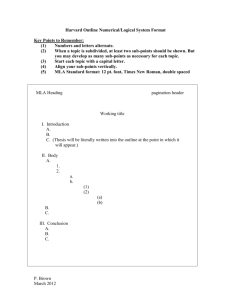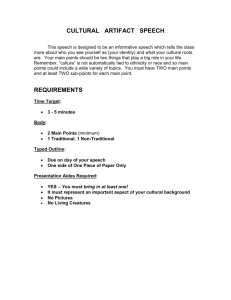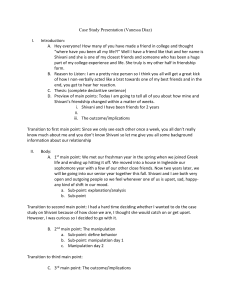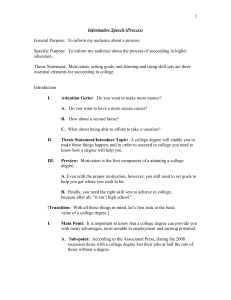3-5 MINUTE TALKS
advertisement
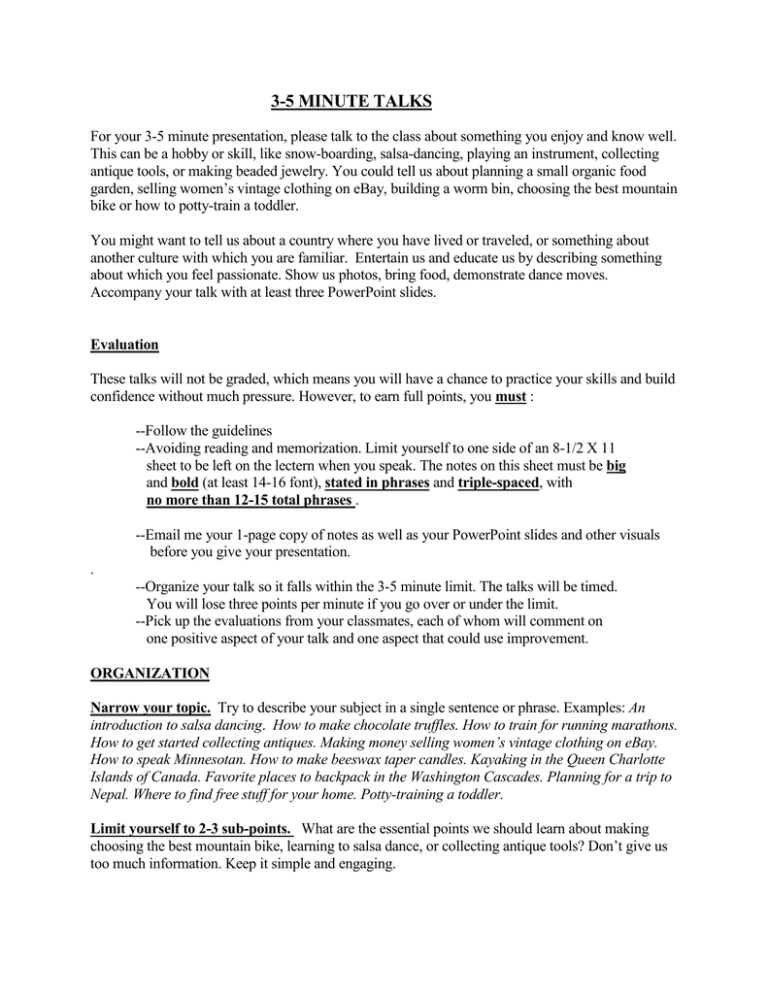
3-5 MINUTE TALKS For your 3-5 minute presentation, please talk to the class about something you enjoy and know well. This can be a hobby or skill, like snow-boarding, salsa-dancing, playing an instrument, collecting antique tools, or making beaded jewelry. You could tell us about planning a small organic food garden, selling women’s vintage clothing on eBay, building a worm bin, choosing the best mountain bike or how to potty-train a toddler. You might want to tell us about a country where you have lived or traveled, or something about another culture with which you are familiar. Entertain us and educate us by describing something about which you feel passionate. Show us photos, bring food, demonstrate dance moves. Accompany your talk with at least three PowerPoint slides. Evaluation These talks will not be graded, which means you will have a chance to practice your skills and build confidence without much pressure. However, to earn full points, you must : --Follow the guidelines --Avoiding reading and memorization. Limit yourself to one side of an 8-1/2 X 11 sheet to be left on the lectern when you speak. The notes on this sheet must be big and bold (at least 14-16 font), stated in phrases and triple-spaced, with no more than 12-15 total phrases . --Email me your 1-page copy of notes as well as your PowerPoint slides and other visuals before you give your presentation. . --Organize your talk so it falls within the 3-5 minute limit. The talks will be timed. You will lose three points per minute if you go over or under the limit. --Pick up the evaluations from your classmates, each of whom will comment on one positive aspect of your talk and one aspect that could use improvement. ORGANIZATION Narrow your topic. Try to describe your subject in a single sentence or phrase. Examples: An introduction to salsa dancing. How to make chocolate truffles. How to train for running marathons. How to get started collecting antiques. Making money selling women’s vintage clothing on eBay. How to speak Minnesotan. How to make beeswax taper candles. Kayaking in the Queen Charlotte Islands of Canada. Favorite places to backpack in the Washington Cascades. Planning for a trip to Nepal. Where to find free stuff for your home. Potty-training a toddler. Limit yourself to 2-3 sub-points. What are the essential points we should learn about making choosing the best mountain bike, learning to salsa dance, or collecting antique tools? Don’t give us too much information. Keep it simple and engaging. Begin with an opener. This will help you “break the ice” and develop rapport with your audience. Openers capture the interest of the audience and give you the confidence that the audience is interested in you. You need to grab our attention with humor, a question for us to answer or a startling fact; something that will engage us and make us want to hear more. End with a conclusion. This should smoothly and briefly finish your talk and leave us with a feeling of completion. Generally, conclusions touch back upon your mail points and sub-points. Stand at the lectern until you have completely done speaking. Don’t make your last remark as you are leaving to take your seat. Presentation Outline Intro: Opener Main point or topic Preview of Organization/sub-points Visual # 1 (Generally, speakers weave some background and/or explanation in before the preview) Signpost to first sub-point. Body: First sub-point Illustration and elaboration. Illustrate in at least two ways. Visual # 2 Signpost Second sub-point Illustrate in at least two ways Visual # 3 Third sub-point Illustrate in at least two ways Visual # 4 Conclusion: Touch back on sub-points/main point End with a strong final statement
